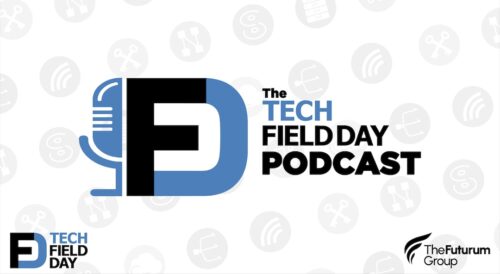Chris Evans looks at the significance of Elastifile now offering a managed scale-out file service for Google Cloud, calling it nothing less than a coup for the company. He goes into the background on Elastifile’s Cloud File Service, which he first saw at Storage Field Day in 2017. By being a native first-party service with GCP, Elastifile gets the benefits of using native APIs, have billing done through Google, and have Google manage their scaling. Having native integration on GCP makes Elastifile “a winner” for Chris.
NVMesh 2 – A Compelling Sequel From Excelero
Dan Frith saw Excelero emerge from Stealth at Storage Field Day last year. Now the company has released a major update to their NVMe pooling software solution, NVMesh 2. This adds MeshConnect with TCP/IP and Fibre Channel support, MeshProtect with parity-based redundancy and mirroring, and MeshInspect for analytics. Dan sees this release smoothing out some of the rough edges of NVMesh 1, and making it a lot more attractive for enterprise customers.
Why Deterministic Storage Performance is Important
Chris Evans looks at why deterministic performance is important in storage. This effects everyone from hyperscalers, to smaller enterprises using HCI. Chris recalls SNIA’s Storage Field Day presentation from last year discuss how the organization is addressing tail latencies as part of this issue. Regardless of the size of an organization, consistent average performance is good, but significant poor performing outliers can be a significant challenge.
Starwind software: SFD15 preview
The first Storage Field Day of 2018 kicks off this week in Silicon Valley. Arjan Timmerman will be in attendance and wrote up a preview of one of the presenters, Starwind. This is their second time presenting, during their first presentation at Storage Field Day, they discussed HCI solution, AcloudA, Veeam VTL and Cloud replication. Arjan is interesting in hearing what they have to say this time around.
Data Mobility – Global/Scale-out Data Platforms
Chris Evans published another post in his ongoing series about data mobility in hybrid cloud. In this post, he looks at Global NAS and other distributed storage solutions, and includes a consideration of how to deal with data consistency. Solutions from NooBaa, Qumulo, Weka, Elastifile, Hedvig and Datera are included in this overview.
My dilemma of stateful storage marriage
Chin-Fah Heoh has been thinking about stateful data in stateful storage containers and how they would interact with distributed applications containers and functions-as-a-service. This led to a consideration of what a distributed data systems would look like, wherein the idea of a “data center” seems like an oxymoron. He’s seen some past Storage Field Day companies offer pieces on how to get to a distributed data system. Chin-Fah will be at Storage Field Day next month, and looks forward to seeing how Hedvig and WekaIO will offer more pieces to this puzzle.
Elastifile Add More Elasticity To Their Offering
After seeing them at Storage Field Day earlier this year, Dan Frith shares his experience with recent updates from Elastifile. The company offers a Cross-cloud Data Fabric to solve the typical data management problems of hybrid-cloud deployments. Dan found the solution flexible, with notable features like encryption at rest coming soon.
HPE Brings Nimble Skynet to 3PAR Arrays
Chris Evans considers how HPE will integrate Nimble Storage’s InfoSight into its 3PAR lineup after the former company’s acquisition. The challenge he sees is that Nimble Storage had a vast catalog of data points to pull from, having collected 4000 different metrics every five minutes from their arrays since 2010. If 3PAR doesn’t have that deep bench of data to pull from, it may take a while for InfoSight to derive valuable insights.
MoSMB, Less Problems
MoSMB from Ryussi offers a proprietary SMB3 alternative to SAMBA for Linux and Unix systems. Rich Stroffolino looks at it’s feature set and why this may be the sweet spot for many NAS vendors looking for something more robust than SAMBA.
SNIA Hops on DePop with Hyperscalers
SNIA presented at Storage Field Day, discussing how hyperscalers are effecting the storage industry as a whole. These businesses command so much storage that they can exert direct feature requests to component makers due to their unique scale. Rich Stroffolino looks at the effects of low percentage tail latency on application performance, and the DePop standard that was developed to address it.
What the heck is tail latency?
Mark May elaborates on the problem of tail latency, as presented on by SNIA at Storage Field Day. According to SNIA, these spikes in latency can be up to ten times as bad as average latency. Mark says that this problem could be fixed by building smarter software that can tag an IO with a retry policy hint, allowing it to favor response time over data recovery. According to SNIA, over 2% of IO may be suffering due to tail latency. Mark knows this is a real problem and hopes it can be fixed in the near future.
Excelero NVMesh: lightning fast software-defined storage using commodity servers & NVMe drives
Jon Klaus came away from March’s Storage Field Day impressed with Excelero. The company came out of stealth at the event with their software defined block scale-out storage, NVMesh. This uses commodity servers and NVMe drives to deliver impressive performance. Jon gives a review of their overall architecture, their value proposition, and general impressions from their presentation.
The Year of Cloud Extension
The idea of incorporating cloud storage into the data center has been around for a while. But Stephen Foskett thinks we’re seeing philosophically different approaches to it recently, with many companies embracing the premise of data non-locality. Stephen sees this change in the assumption from data being tied to a data center to the cloud as a transformative shift allowing for true data center transformation.
Excelero’s NVMesh Magic
Excelero made a big splash with delegates from their debut at Storage Field Day in March. Rich Stroffolino has been mulling over their presentation and wrote up his thoughts. The company’s scale out storage architecture really seemed to excite Rich at the possibility, as it was able to achieve millions of IOPS on relatively cheap hardware. This combination, despite a dearth of data services, seemed to open up a lot of possibilities.
Datera Elastic Data Fabric
Rich Stroffolino takes a look at Datera’s Elastic Data Fabric, as presented at Storage Field Day in March. With this solution, Datera hopes to provide a way to make on-site storage as flexible and automated as public cloud offerings, and to provide easy ways for organizations to adopt a hybrid cloud strategy.
Back to the Storage Future with Intel’s SPDK
Rich Stroffolino gives an over of Intel’s SPDK, which includes a storage driver that bypasses the kernel for lower latency and better scaling with NVMe storage. Intel’s software approach to performance optimization perhaps signals a performance plateau based on hardware advances alone.
Moving to and between clouds made simple with Elastifile Cloud File System – FastStorage
Moving data to the cloud and moving between clouds are some of the primary challenges facing organizations today. Often cloud provider lock-in is a very real concern. From what Jon Klaus saw from Elastifile, their Elastifile Cloud File System is the secret to make both easier. ECFS is designed for web scale clients and users, and can be extended into the public cloud. Designed with true distribution in mind, the file system should allow you to easy and reliably move data between on-premises and the public clouds.
The Future of On-Prem in a Cloud World
Rich Stroffolino shared an interview from ZDNet, considering what the roll of the cloud would be in the data center. Rich found it part of an interesting trend in the enterprise, seeing cloud computing as less of a zero-sum game with on-prem, and more of a spectrum. In the interview, Michael Howard and Monty Widenius both actually predict a move back to on-prem infrastructure, as cost and performance are better presented vs the seeming ease of the cloud. It’s an interesting debate, we’ll see how the winds of change impact the role of the public cloud going forward.
Open19 Brings a new build paradigm to HyperScale Buildouts
At Storage Field Day, Excelero gave some of their presentation time to Open19, an project from LinkedIn to standardize and speed data center deployment. Using a Lego like approach to speed plugin time, their technical specifications allow for delivery of a rack of components in as little as two hours, down from an estimated eight. While this approach might not fit data centers with a lot of legacy equipment, Matt seems to like it for new build outs. Make sure to check out Matt’s piece and their video from the event for more specifics.
Excelero achieves amazing stats at #SFD12
Matt Leib got to see Excelero’s debut at Storage Field Day last month. It’s a presentation that’s gotten a lot of the delegates excited, and Matt is certainly no exception. Their storage solution allows you to access disks in a storage array via their own RDDA, essentially NVME over Fabric. This makes the overhead for disk access negligible. Using commodity networking, this essentially allows the NVMe drives to effortlessly scale. The company demoed getting millions of Iops with minimal latency on hardware costing less than $15,000. Matt summed the presentation up by calling it “[a]stounding technology”.








